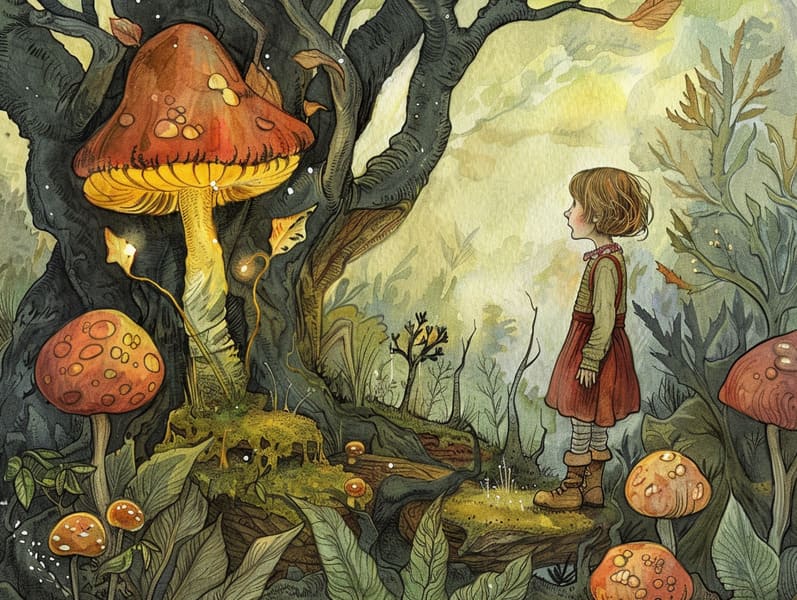Exploring the Roots of Timeless Fairy Tales and Its Eternal Captivation.
Exploring the Roots of Timeless Fairy Tales and Its Eternal Captivation.
Blog Article

Timeless fairy tales have long histories. These narratives have been told from one generation to the next millennia before they were ever written down. They emerged from a variety of traditions, including Asian traditions. They were initially transmitted among elders, often carrying themes and messages aligned with the societal norms and beliefs of the time.
Jacob and Wilhelm Grimm, Jacob and Wilhelm Grimm, were among the first to gather many of these beloved fairy tales. Their published works, "Grimm's Folk Tales," included stories like "The True Bride," "Hansel and Grethel," and "Schneewittchen," which have since become essentials in the world of classic fairy tales. Similarly, Hans Christian Andersen's fanciful stories, such as "The Mermaid," and "The Little Duckling," have enchanted hearts worldwide, cementing their place in the pantheon of famous fairy tales.
Despite their historical roots, these stories remain as applicable as ever, especially as bedtime stories for kids. These charming stories are now available in multiple formats, including vividly illustrated books, enchanting animations, and digital fairy tales.
Their continued relevance can be linked to several fascinating points:
Moral Lessons: Timeless fairy tales often impart important moral lessons. Fairy tales like "The Boy Who Cried Wolf" teach the value of truthfulness, while "The Hare and the Tortoise" point out the qualities of perseverance and humility. These tales offer little ones clear distinctions between good and bad, developing their moral compass in a soft yet important way.
Sympathy and Perception: Classic fairy tales frequently illustrate heroes facing tests and troubles, provoking kids to empathize with their struggles and support their triumphs. For instance, "Beauty's Beast" demonstrates the benefit of seeing beyond looks to recognize the real person of a being, nurturing compassion and understanding.
Cultural Perception: Many timeless fairy tales are interwoven with the cultural contexts from which they developed. Exploring these stories can provide captivating looks into different social structures, cultivating a sense of cultural awareness and appreciation.
Fantasy and Imagination: The whimsical elements in fairy tales—fairy godmothers—invigorate children’s visions. These stories transport readers to imaginary realms, enhancing creative thinking and a sense of excitement that continues a lifetime.
Classic fairy tales are not only magical but also instructive. They function as mesmerizing tools in building various thinking and feeling skills in young ones. When old fairy tales are recited, they boost communication skills by presenting new language items and elaborate sentence structures. This practice also promotes listening abilities and focus, as young readers focus on every detail, anxious to see what happens next.
Furthermore, reflecting on the themes and characters of ancient fairy tales can promote thinking skills and problem-solving abilities. Children are led to identify patterns, forecast, and know cause and effect. These examinations also contribute to the young utter their thoughts and feelings, strengthening their emotional intelligence.
In today’s modern era, the presence of digital fairy tales has made these fairy tales more available than ever. Internet resources and mobile apps give large libraries of ancient fairy tales that can be seen or played anytime, anywhere. Fairy tales recited are particularly liked, extending an interactive way for the young to appreciate these charming stories. Audio stories and read-to-me stories lead characters and settings to life, often accompanied by mesmerizing musical scores and music that enhance the storytelling experience.
The enduring charm of old fairy tales lies in their ability to change to contemporary times while keeping their main lessons. Contemporary versions of these narratives often bring in more representative characters and modern settings, making them familiar to today’s audience. However, the main ideas of fortitude, sympathy, and justice remain unchanged, continuing to reach audiences of all ages.
Fairy tales also offer a sense of calm and recognition. They share a well-arranged narrative with a transparent beginning, middle, and end, often drawing to a close with the conclusion of conflicts and the triumph of truth over falsehood. This consistency can be consoling for children, granting a sense of solidity in an ever-changing world.
Timeless fairy tales continue to enthrall and train new generations, maintaining their appeal and value in modern society. As children's night stories, they furnish a perfect blend of allure and teaching, backing moral values, empathy, and creativity. The abundance of free fairy tales online and the popularity of fairy tales voiced secure that these check here old stories remain acquirable to new generations.
By maintaining and narrating these fairy tales, we continue to venerate the rich tapestry of legends and cultural heritage. Whether you are exploring a beautifully illustrated book, exploring a internet collection, or hearing an spoken story, the grace of old fairy tales is always within reach. These tales convey of the immortal impact of tales and its ability to bind us across epochs and places.
Whether you are reading a gorgeously illustrated book, exploring a digital library, or listening to an spoken story, the spell of popular fairy tales is always within reach.
These stories remind us of the timeless ability of stories and its ability to tie us across generations and cultures, establishing a link that delights and instructs alike.